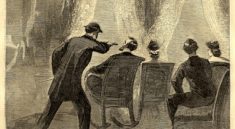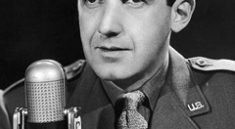America’s deadliest school massacre, 1927 bombing of Bath Consolidated School in Michigan, 44 people killed 38 students by explosives, Andrew Kehoe perpetrator
From Smithsonian.com May 18, 2017.
“The 1927 Bombing That Remains America’s Deadliest School Massacre”
“In 1927, Bath was a rural village of 300 people despite its location ten miles from Lansing, the state capital. The local institute of learning was Bath Consolidated School, built only five years earlier to replace the scattered one-room schools of the surrounding farmland. It had 314 students from around the region, many the sons and daughters of farmers. Some students were bused in, and all took classes with their peers over the course of elementary and high school.
May 18 was the last day of classes for students that year, but at 8:45 the north wing of the three-story structure exploded with such force that the boom was heard miles away.
“We knew it came from Bath, but we didn’t know what it was or anything, so we jumped in the old car and drove as fast as we could to see what it was,” Irene Dunham told the Lansing State Journal. The centenarian is the oldest living survivor. She was 19 at the time, a senior about to finish her last year—and stayed home that morning due to a sore throat.
“There was a pile of children about five or six under the roof and some of them had arms sticking out, some had legs, and some just their heads sticking out. They were unrecognizable because they were covered with dust, plaster and blood,” wrote local author Monty J. Ellsworth in his 1927 account, The Bath School Disaster. “It is a miracle that many parents didn’t lose their minds before the task of getting their children out of the ruins was completed. It was between five and six o’clock that evening before the last child was taken out.””
“In the end 44 people died, 38 of them students. It wasn’t the first bombing in the country’s history—at least eight were killed during the Haymarket Square rally in Chicago in 1886, and 30 when a bomb exploded in Manhattan in 1920. But none had been so deadly as this, or affected so many children.
Newspapers rushed to make sense of the tragedy. They called Kehoe insane, demented, a madman. Although there was little understanding of mental illness at that point, the media still tried to find reasons for the bombing. “He was notified last June that the mortgage on his farm would be foreclosed, and that may have been the circumstance that started the clockwork of anarchy and madness in his brain,” claimed the New York Times, while the Boston Daily Globe suggested that two head injuries may have disrupted his thinking.
“At the conclusion of the inquest, it says he was of rational mind the whole time,” Bernstein says. “It does take a rational mind to plan all that out. The reality is there’s no why.””
Read more:



